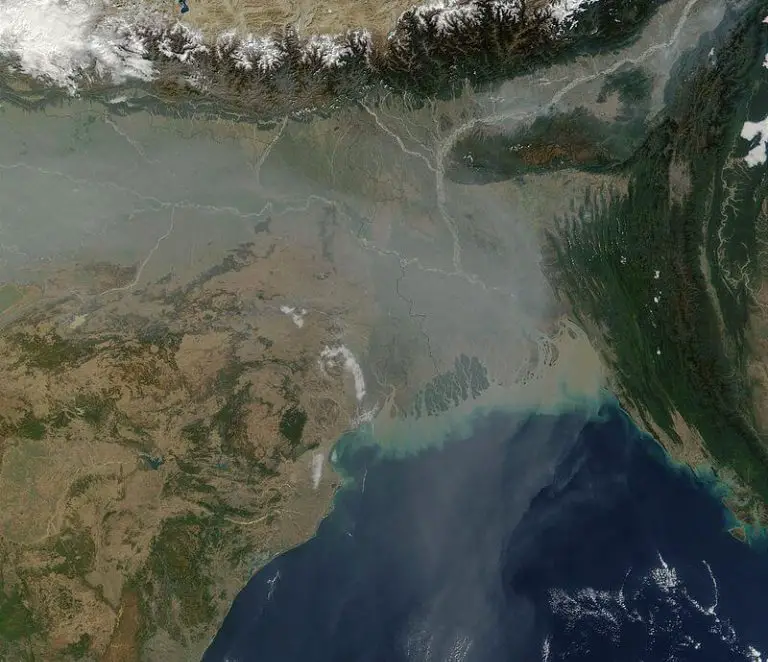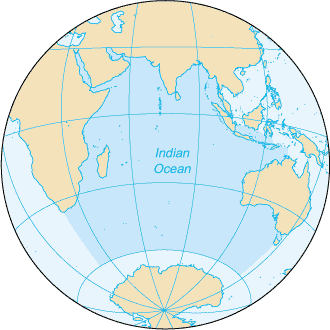
INTERESTING FACTS ABOUT THE INDIAN OCEAN !!!
The Indian Ocean is one of five oceans on our planet. The other four are the Pacific Ocean, the Atlantic Ocean, the Arctic Ocean and the Southern Ocean.
The five oceans are all connected together, which in turn are divided up by the world’s seven continents.
The Indian Ocean borders four continents: Asia, Africa, Australia and Antarctica.
The Indian Ocean covers around 20% of the Earth’s surface.
The five oceans combined cover up to 71% of the Earth’s surface.
The Indian Ocean is the third largest ocean in the world. The largest and deepest of the world’s five oceans is the Pacific Ocean.
The Indian Ocean is divided into east and west by a 5000 km long mountain range on it’s ocean floor, called the Ninety East Ridge.
The Indian Ocean has an area size of about 70.56 million km².
The Indian Ocean also includes the Red Sea and the Persian Gulf.
The Indian Ocean is roughly 5.5 times the size of the U.S.
The Indian Ocean is the youngest of the five major oceans.
The Indian Ocean has a minimum temperature of around 22°C or 71° F. However, in the southern regions nearer to the polar regions, the temperatures drop drastically.
The Indian Ocean has many islands. The most well known are Mauritius, Seychelles, Madagascar, Sri Lanka and the Maldives.
Some of the biggest coastal cities situated along the Indian Ocean include Mumbai (India), Durban (South Africa), Perth (Australia), Colombo (Sri Lanka), and the island-nation of Singapore.
The Indian Ocean has total coastline of around 41,340 miles.
It is estimated that 40% of the world’s oil comes from the Indian Ocean.
With the polar caps melting, the Indian Ocean actually grows wider by around 20 cm every year.
In the Indian Ocean, monsoons are very common, producing a large amount of rain in the summer and a lot of wind in the winter.
With warm water temperatures, the Indian Ocean is vulnerable to cyclones, tsunamis, monsoons and high intensity storms.
The Indian Ocean suffered one of the worst natural disasters ever in 2004. A tsunami struck, affecting 14 different countries and claiming over 200,000 lives.
The Indian Ocean tsunami in 2004, was caused by an earthquake, that is said to have had the energy of 23,000 Hiroshima-type atomic bombs.
The greatest width of the Indian Ocean is between the eastern coast of Africa and western Australia, at 1,000 km or 620 miles.
The average depth of the Indian Ocean is about 3,900 meters (12,795 feet). The lowest point is in the Java Trench, which is about 7,450 meters (24,440 feet) deep.

The Indian Ocean is the warmest of the world’s oceans. Due to the warm temperatures, it makes it difficult for phytoplankton to grow, which is essential as a food source to maintain life in the ocean. It also has a very low oxygen content.
Due to high water temperatures, the Indian Ocean has limited marine animal life.
Some endangered sea species in the Indian Ocean are turtles, seals and sea cows. It does however remain the largest breeding ground for the majestic humpback whale.
Scientists recently have discovered a lost continent in the depths of the Indian Ocean. They have named this undiscovered land mass, “Mauritia.” It is believed that the movement of a tectonic plate over 80 million years ago, caused Mauritia to fracture and sink to the bottom of the ocean.
The Indian Ocean is known as “Ratnakara,” which means “the creator of jewels,” by an ancient Sanskrit literature.
Sanskrit is an ancient Indo-European language of India.
The sea lanes in the Indian Ocean are considered the most important in the world.
Oceans are important trading routes. Ships still provide one of the most efficient ways of transporting heavy materials, such as oil over long distances, while container ships carry all kind of goods, from frozen food to cars and computers.
The Suez Canal, the Strait Of Malacca, and the Strait Of Hormuz are the main access points to the Indian Ocean. They are regarded to be some of the worlds most major ports.
Oceanic trading became safer and quicker when the Suez Canal in Egypt, and the Panama Canal in Central America were built in the 19th, and early 20th century. The canals enabled ships to trade between the Indian, Atlantic and Pacific Oceans without making long dangerous trips around the stormy southern capes of Africa and South America.
Since the expansion of air travel, tourism has become a major industry on many, once remote islands, such as Mauritius in the Indian Ocean. Their income now relies heavily on tourism.
Developments in the Indian Ocean designed to attract tourists often cause environmental problems. It also suffers a lot of pollution from oil and ship spills.
In 2010, the Indian Ocean Garbage Patch was discovered. The plastic garbage vortex, full of marine litter, spans over 5 million square kilometers.
The garbage patch was created by a Gyre, which is a system of circulating currents in an ocean.
Earth also has smaller bodies of water that are partly enclosed by land, called the seas. The three largest seas are the Caribbean Sea, the Mediterranean Sea, and the South China Sea.
Water is vital to all forms of life, and it is more likely that life on Earth began in the oceans. Oceans also make life on land possible, so without them, humans could not exist.





